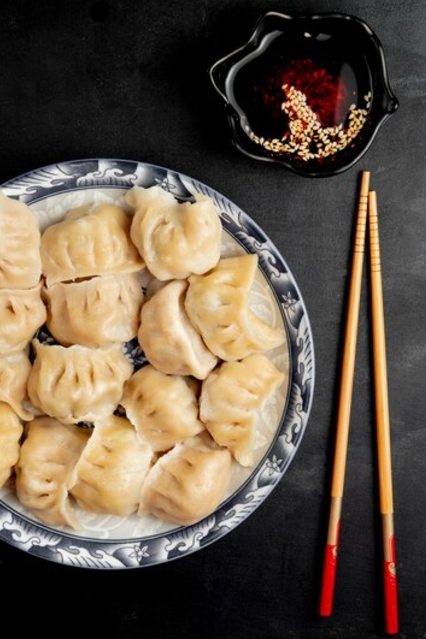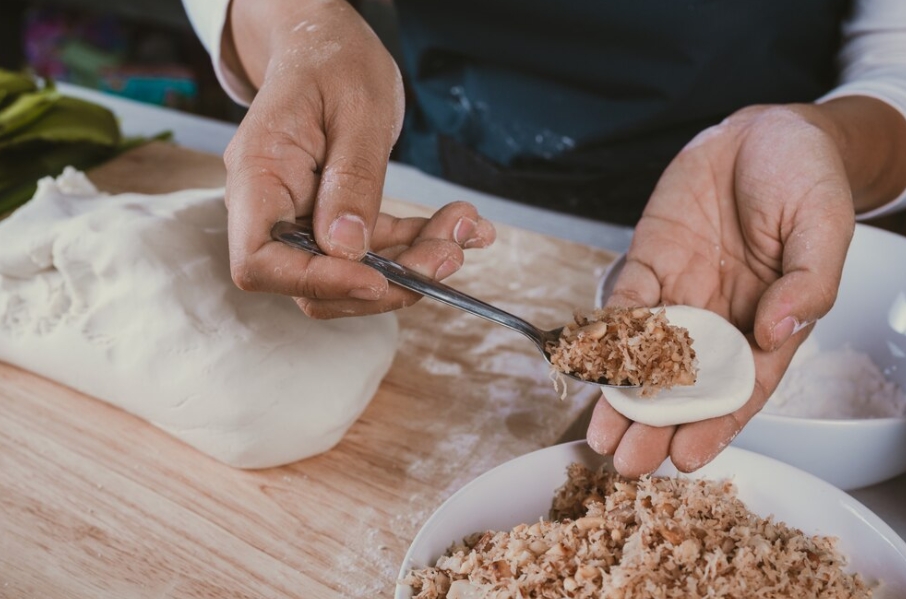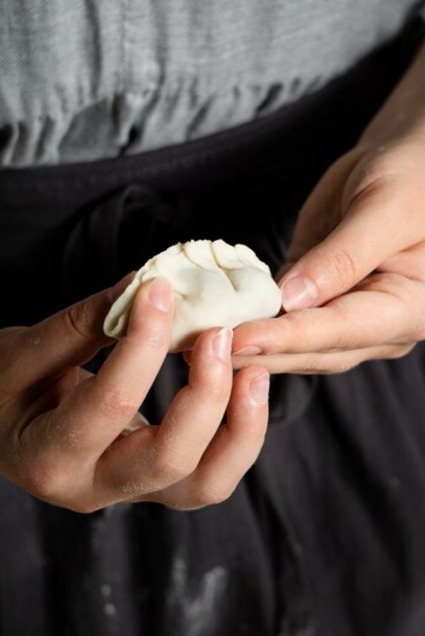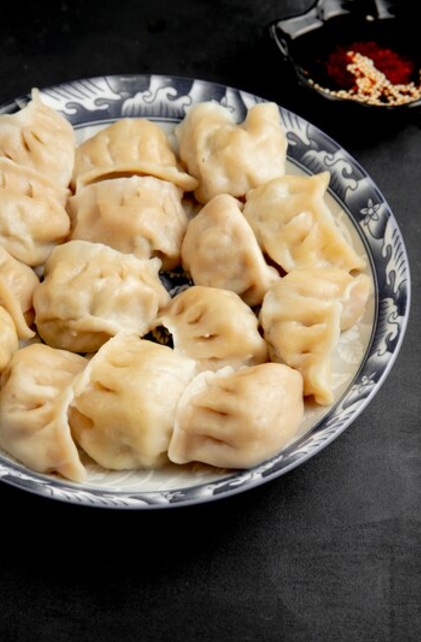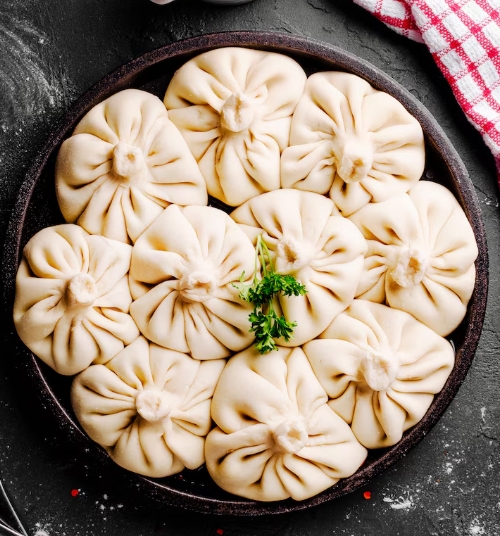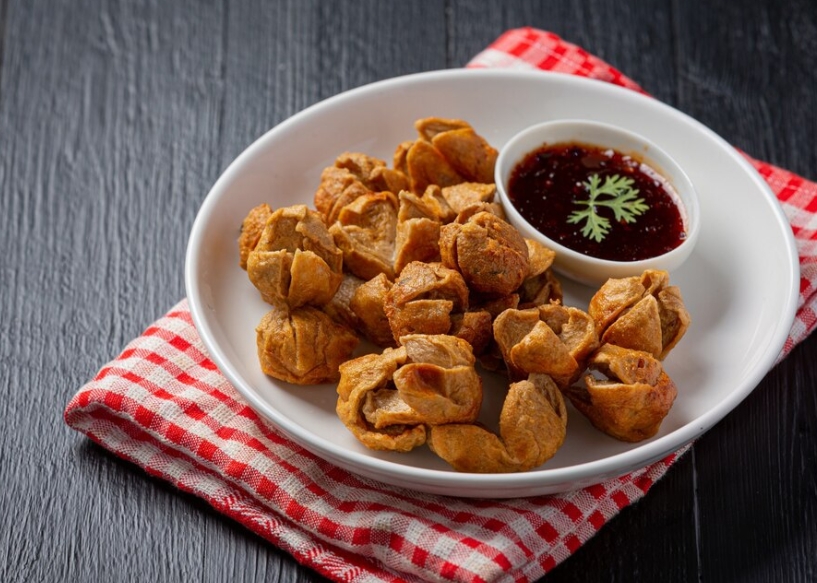What You Can Learn From This Recipe?
You may learn how to wrap dumplings with this recipe, which is a useful technique for creating a variety of filled pastries. Along with learning the distinctions between pan-frying, boiling, and steaming dumplings, you will also learn how to prepare a well-seasoned filling.
What I Love About This Recipe?
I love the way this recipe unites people. Enjoying the final dish or folding dumplings with family is a joyful and connected culinary experience. Additionally, it is a go-to option for any occasion due to the fillings’ adaptability.
What’s the Best Way to Store Leftovers?
For up to two days, cooked dumplings can be kept in the refrigerator in an airtight container. To restore their texture, reheat them by steaming or pan-frying them once more. You can keep uncooked dumplings in freezer bags for up to a month after freezing them on a tray.
What to Serve With It?
Dips such as black vinegar or soy sauce with chile oil make dumplings sparkle. For a full supper, serve them with a crisp Asian cucumber salad or hot & sour soup. For beverages, the flavors go very well with light beer or green tea.
Dumplings: A Universal Comfort
Description
A culinary gem that is valued in many cultures is dumplings. These delicious dough pockets, which are found in Eastern European pierogi and Chinese dim sum, can be filled with everything from sweet fruits and custards to savory meats and veggies. Dumplings are a comfort dish that can be prepared in a variety of ways, including steamed, boiled, fried, and baked. They may be tailored to fit any palette or occasion and are ideal as an appetizer, main meal, or dessert.
Basic Dumpling Dough and Filling
Instructions
Making and Cooking Dumplings
-
Prepare the Dough:
- In a bowl, mix the flour and salt together.
- Slowly add warm water while stirring until a dough forms.
- Knead the dough on a floured surface for 8–10 minutes until it is smooth.
- Cover and let it rest for 15 minutes.
-
Prepare the Filling:
- In another bowl, mix ground meat (or tofu), cabbage, scallions, soy sauce, sesame oil, garlic, ginger, and pepper.
- Stir until well combined.
-
Roll and Cut the Dough:
Divide the dough into small portions and roll each into a thin circle about 3 inches in diameter.
-
Fill the Dumplings:
- Place 1 teaspoon of filling in the center of each dough circle.
- Fold the edges and seal tightly, forming a crescent shape.
- Use water to help seal if necessary.
Cook the Dumplings:
-
Steamed:
Arrange dumplings in a steamer lined with parchment paper and steam over boiling water for 10–12 minutes.
-
Boiled:
Drop dumplings into boiling water and cook until they float, about 5–7 minutes.
-
Fried:
Heat oil in a pan, add dumplings, and fry until golden on one side. Add water, cover, and steam-fry until fully cooked.
Serve and Enjoy:
-
Serve hot with soy sauce or dipping sauce of your choice.
Nutrition Facts
Servings 4
- Amount Per Serving
- Calories 200kcal
- % Daily Value *
- Total Fat 9g14%
- Saturated Fat 2g10%
- Cholesterol 30mg10%
- Sodium 400mg17%
- Potassium 100mg3%
- Total Carbohydrate 22g8%
- Dietary Fiber 1g4%
- Sugars 1g
- Protein 9g18%
* Percent Daily Values are based on a 2,000 calorie diet. Your daily value may be higher or lower depending on your calorie needs.
Note
- Try using different fillings like mushrooms, shrimp, or sweet red bean paste.
- Dumpling wrappers can be bought pre-made for convenience.
Journey of Dumplings: A Tale Across Cultures
Dumplings have a history that crosses centuries and countries, with each culture adding its own special twist to this adaptable meal. Dumplings are thought to have started in China during the Han Dynasty, when Zhang Zhongjing, a doctor, invented them as a remedy for frostbite. These tiny pockets of warmth, filled with meat and herbs, served as both food and medicine.
The idea of dumplings then expanded along the Silk Road and took on innumerable variations. They evolved into ravioli in Italy, where they were stuffed with meat or cheese and served with flavorful sauces. Pierogi and pelmeni, which are frequently filled with sweet fruits, potatoes, or mushrooms, became staple foods throughout Eastern Europe. Japan gave us gyoza, which are thinner and crispier cousins of Chinese food, while India offered momos, which are steamed and served with spicy sauces.
Culturally, dumplings are a representation of plenty and togetherness. In order to attract fortune, they are traditionally offered at Lunar New Year in the shape of old gold ingots. Pierogi, which represent family and celebration, are a mainstay of Christmas Eve dinners in Poland.
Dumplings have a universal appeal despite geographical variations. They are proof of how creatively simple components can be transformed into satisfying, tasty morsels. Dumplings, whether they are boiled, fried, or steam-cooked, serve as a reminder of the beauty of culinary diversity and the coziness of home.
We appreciate you coming along on this dumpling adventure with us!

